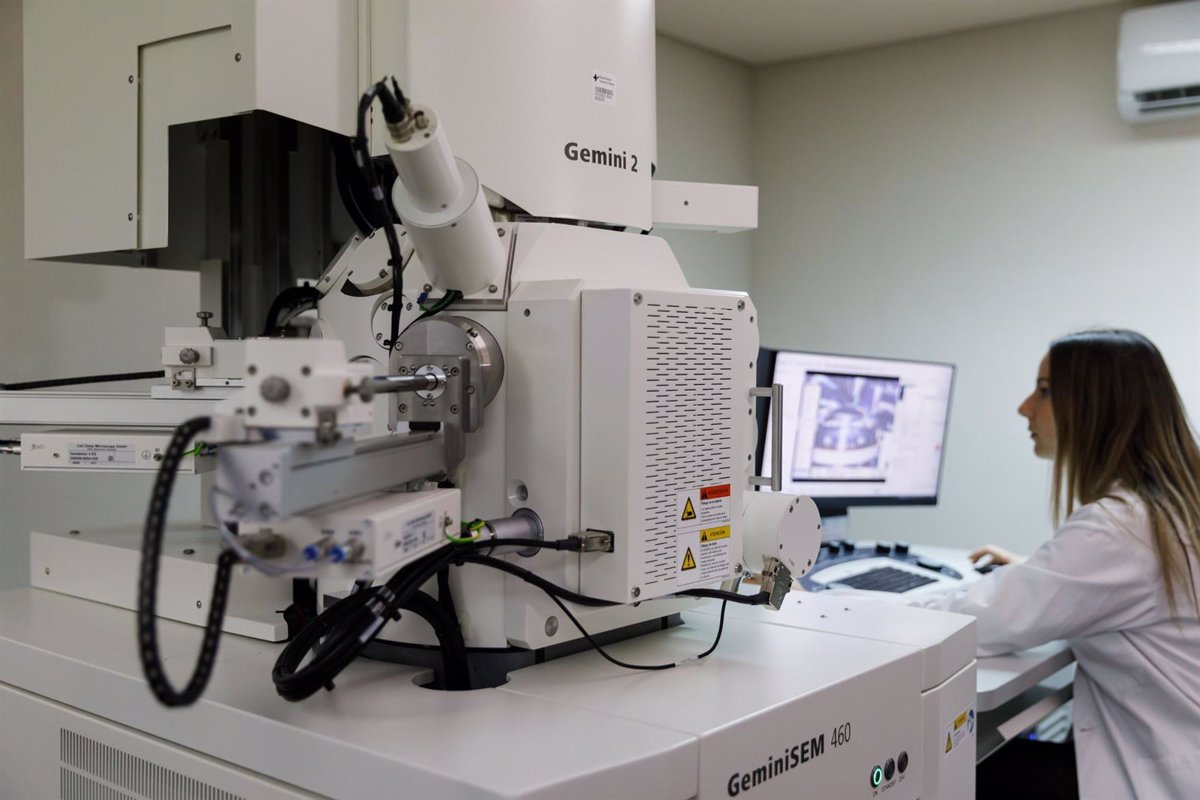ISABIAL and CIKZ create an electron microscopy department for high-resolution 3D biopsy

VALENCIA, October 13 (EUROPE PRESS) –
The Institute of Medical and Biomedical Research of Alicante (ISABIAL) and the Prince Felipe Research Center (CIPF) in Valencia have agreed to expand research through the use of electron microscopy, a scientific method used to obtain high-resolution images of the internal ultrastructure of cells. .
This project becomes prominent with the creation of the Joint Electron Microscopy Unit CIPF-ISABIAL, a development of the old electron microscopy platform of the Alicante Research Institute, which was created with the aim of promoting excellent research and high-impact scientific results in Valencia. Community.
Prior to the creation of the Joint Electron Microscopy Unit, ISABIAL already had an electron microscopy platform which, since its inception, has significantly improved the diagnostic capabilities of the General University Hospital Dr. Balmis in Alicante. However, thanks to the merger with the Prince Felipe Research Center (CIPF) in Valencia, this new research unit takes on even greater significance by combining the equipment and specialized knowledge of both institutions.
The initiative not only entails expanding technological and human capabilities, but also promotes networked research that allows scientific projects of “more complex and global impact” to be tackled, the Generalitat said in a statement.
Also among the tasks set by ISABIAL and CIPF for this unit is promoting the development of joint projects in the field of electron microscopy, as well as cooperation in organizing events of mutual interest, such as training events, conferences. , symposia, conferences or conferences and others. The purpose of this unit is also to strengthen the training of scientific and technical personnel.
SCIENTIFIC RESPONSIBILITIES
Each research center will have a scientific director, who in the case of ISABIAL will be researcher and doctor José Antonio Gómez, who emphasized that this unit “will allow the exchange of equipment and knowledge to use the latest technologies and flows.” works in the fields of electron microscopy and biological sample preparation, as well as high-pressure freezing and automatic serial cutting of ultrafine particles.
On behalf of CIPF, the scientific director is Dr. Luke Noon, who noted that ISABIAL “has the latest technology and expertise in scanning electron microscopy, which will be used to obtain 3D images, while CIPF has experts in targeting (correlation) electron microscopy with a point of interest and a powerful computing node with a computational biology unit that will be used to analyze and store huge data sets.”
“The goal is to create an interactive online repository of 3D digital biopsies that can be explored by both scientists and pathologists to gain new and more accurate knowledge about human diseases,” concluded the CIPF GenT Distinguished Investigator.
“ACCURRENT AND FAST” DIAGNOSTICS
The CIPF-ISABIAL mixed electron microscopy facility offers modern equipment that allows you to obtain high quality images. These images are essential for the pathological anatomy service of the Dr. Balmis University Hospital in Alicante, as they facilitate the “precise” diagnosis of various pathologies such as renal glomerulopathy, epidermolysis bullosa, ciliary dyskinesia, myopathies and others, in order to determine treatment. specific.
The technique is also “very useful” for kidney biopsies and diagnosing hereditary diseases. In addition, it is used for definitive diagnosis of skin and neuromuscular diseases.
Before the creation of the ISABIAL platform, the Dr. Balmis University Hospital in Alicante had to send samples to other centers with similar equipment to obtain accurate diagnoses. Thanks to the ISABIAL platform, the diagnostic process has been simplified and patient care has been improved in the health department of the Alicante General Hospital. This improvement has optimized hospital resources and contributed to more efficient and timely care for patients.
SCIENTIFIC APPLICATIONS
Volumetric electron microscopy (vEM) is a powerful, revolutionary new technology that can digitally reconstruct cells and structures in tissue biopsies in three dimensions. Like traditional electron microscopy, it provides the highest resolution, but this new approach also allows for 3D navigation of the sample, offering radical new insights into human anatomy and disease.
The vEM technique has revolutionized our understanding of the human brain, and in 2023 the journal Nature recognized it as one of seven technologies to consider for the future. There are two main challenges facing this rapidly evolving methodology. One is to precisely direct the technology to the right place inside the organ, and the second is to manage the enormous amount of data it produces.
To address these challenges, ISABIAL and CIPF are joining forces to combine infrastructure and expertise. The Alicante Institute has the latest technology and expertise in scanning electron microscopy for 3D imaging, while the Valencia Center has experts in object orientation, as well as a powerful computing node and a computational biology unit that will be used to analyze and store the resulting data. .